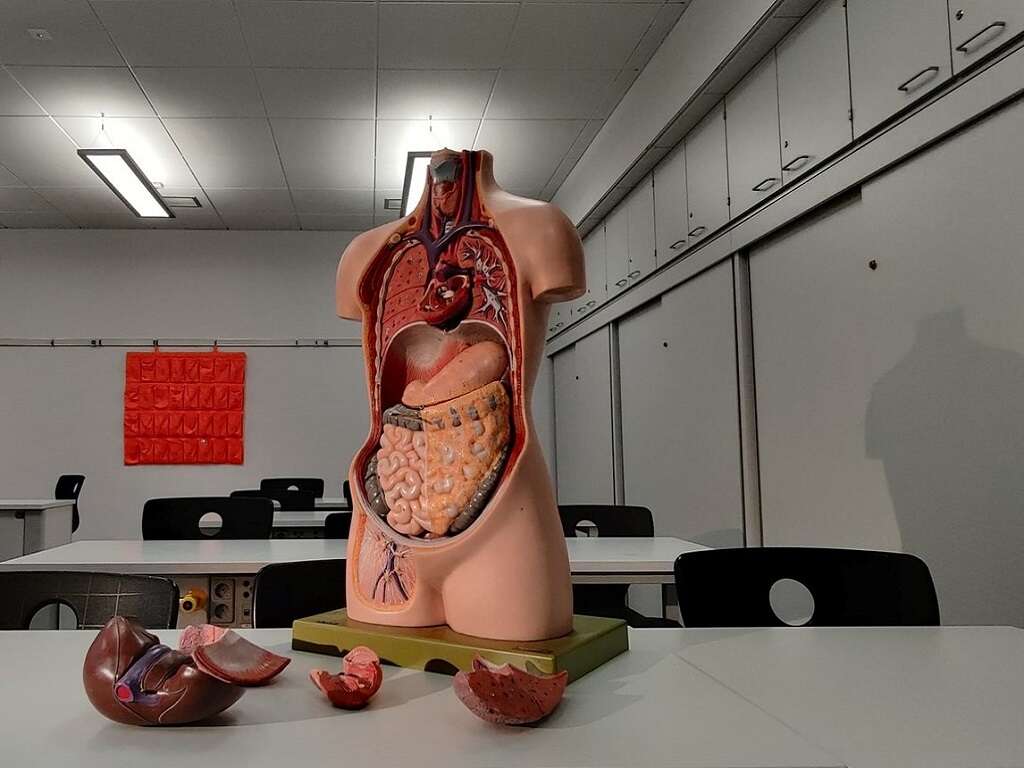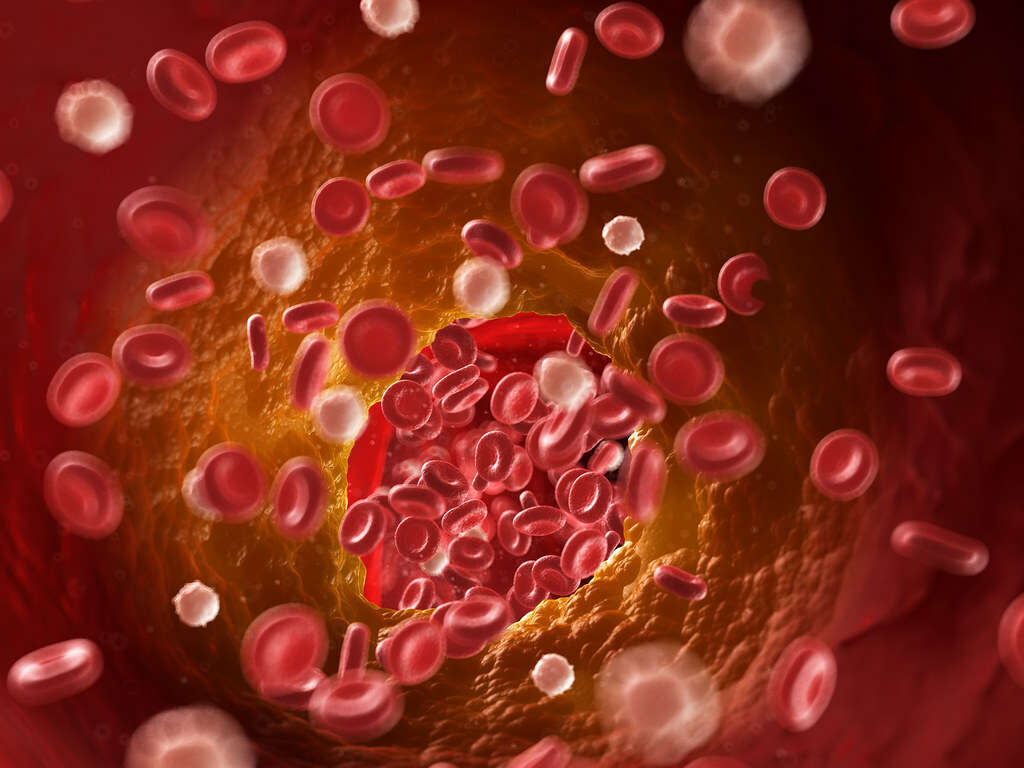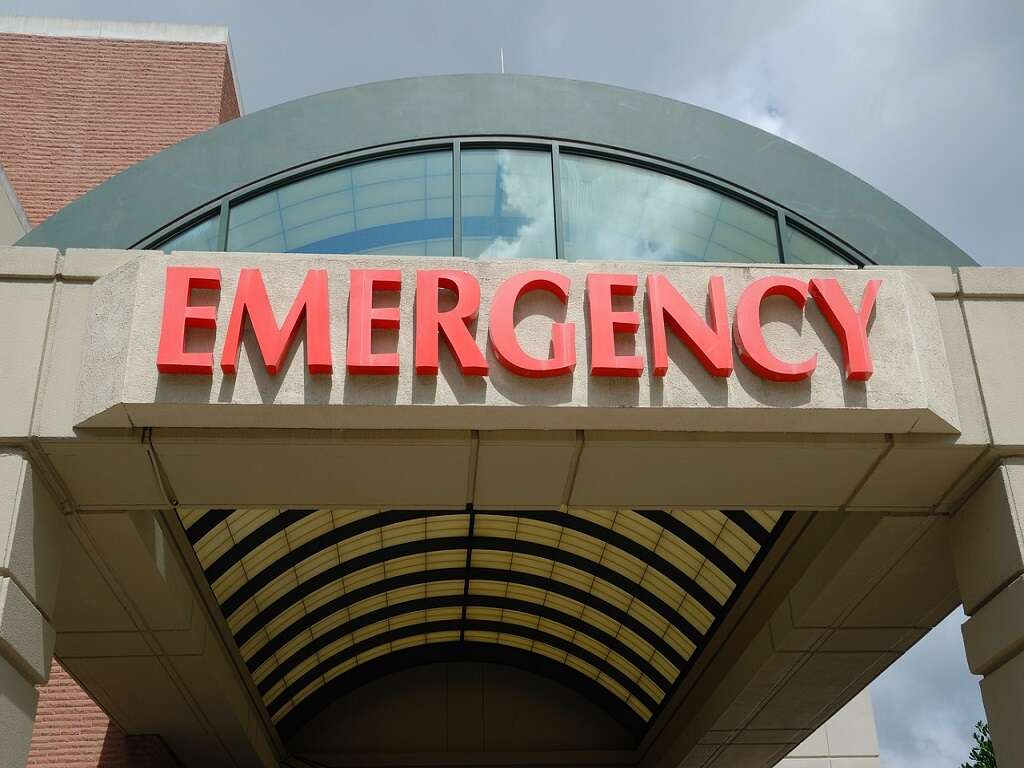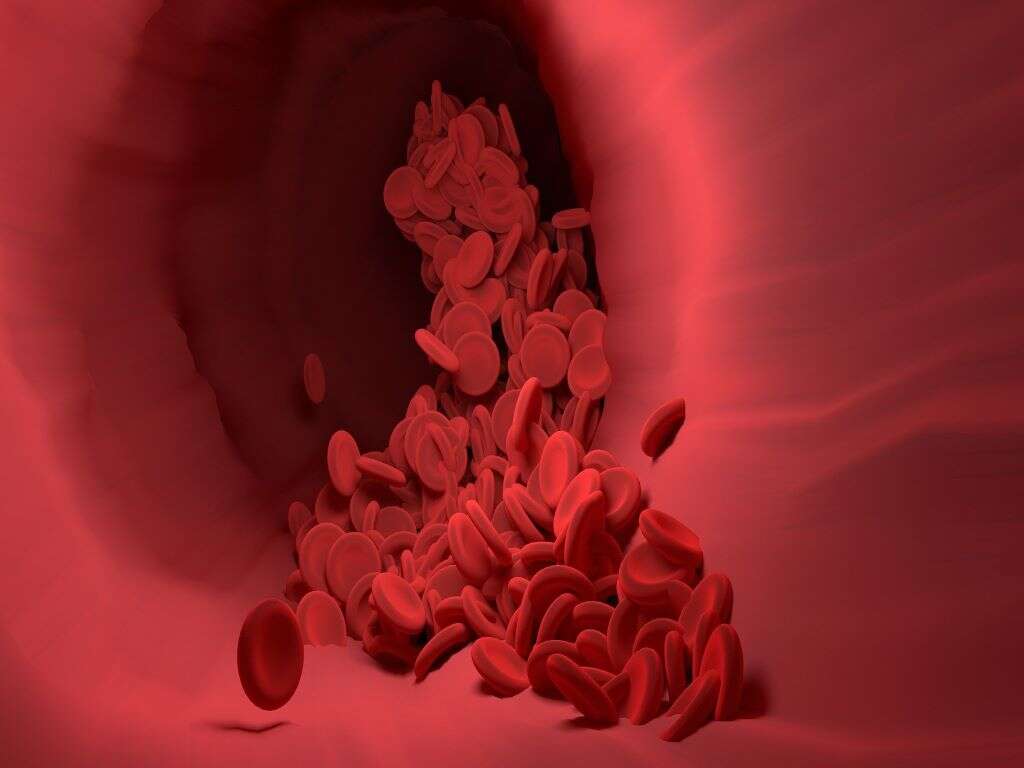10 Internal Bleeding Symptoms
Internal bleeding can be described as a hemorrhage from a blood vessel that is within the body and it is not easily seen on the surface. It is also known as internal hemorrhage and depending on the affected tissue, it can cause many different symptoms. Most organs in our bodies are well vascularized, meaning they have a complex array of veins and arteries that are going to supply nutrients and also get rid of waste products that are no longer necessary.
There are many ways that a person might suffer from internal bleeding. Trauma to the head, abdomen, and almost any part of the body may cause damage to the blood vessels located in those tissues causing them to bleed. Other conditions like aneurysms may happen spontaneously without giving any signs or symptoms as well. The gastrointestinal tract is also a commonplace where we can find hemorrhages associated with many conditions such as liver disease, hemorrhoid disease, gastritis, and many more.
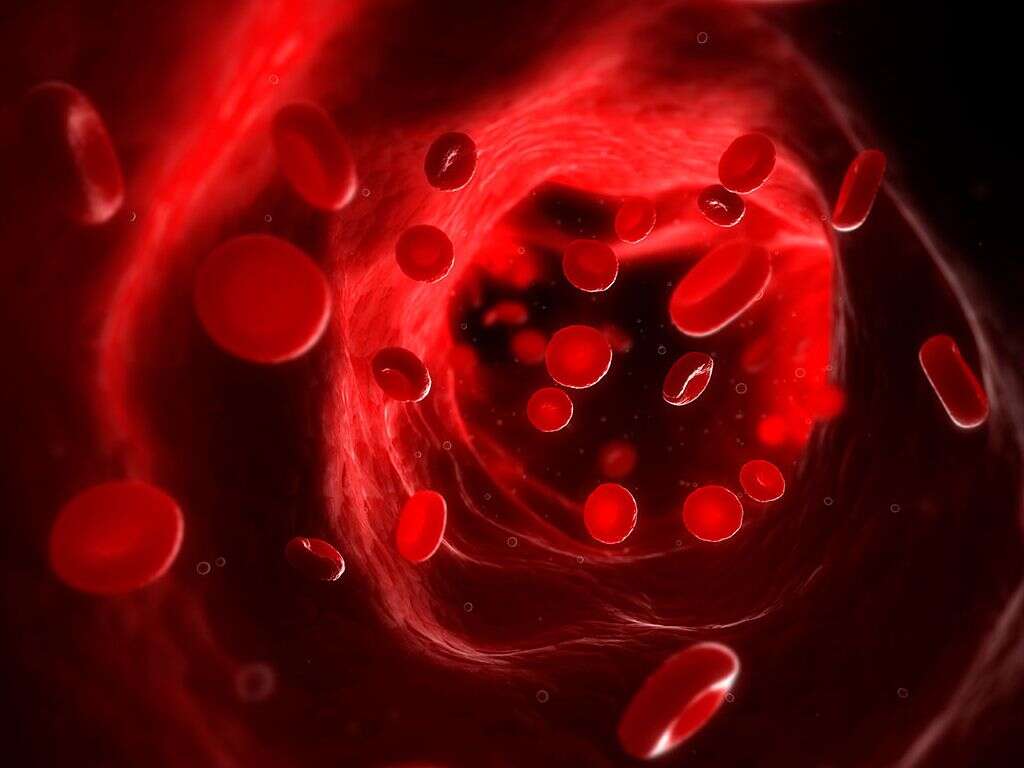
1. Dark Stools
The dark color of the stools is given to them by a unique pigment called coprobilinogen that is located in our gastrointestinal tract. The color of the stools may vary slightly from person to person. Nevertheless, healthy stools should have a brown or similar color. Many conditions may alter the color of the stools, causing them to become pale or dark brown almost like coffee.
Dark stools that resemble the color of coffee are a sign of bleeding in the gastrointestinal (GI) tract. The origin of the bleeding is usually in the upper GI tract, which might involve the stomach, esophagus, or duodenum. As the blood gets degraded in the GI tract, it turns from the usual red color that we are familiar with into a dark brown, almost blackish color that we see in the stools of patients with an upper GI hemorrhage.

2. Rectal Bleeding
Rectal bleeding can be described as the presence of blood in the stools. It is a non-specific symptom that may be associated with many conditions such as hemorrhoid disease, gastroenteritis, inflammatory bowel disease (IBD), and even colon cancer.
Bloody stools are a sign that there is a part of the lower gastrointestinal (GI) tract that is bleeding. Unlike the dark stools seen in patients with an upper GI hemorrhage, lower GI hemorrhage causes blood to be seen in the stools. The bleeding could be a sign of polyps in the intestines, Crohn’s disease, or even colon cancer. Other possible reasons include anal fissures, internal hemorrhoids, and infectious conditions of the GI tract to name a few.

3. Fatigue
Fatigue can be described as a general feeling of exhaustion. Usually, this symptom improves with adequate rest, but depending on the source of the problem, it may not improve at all. It can be triggered by exercise, stress, and work-related activities. It is a non-specific symptom that can be associated with many conditions like anemia and anxiety, to name a few.
Regardless of the source of bleeding, losing blood due to an internal hemorrhage may cause the patient to become anemic. This is commonly seen in conditions with a more insidious onset like colon cancer and bleeding polyps in the uterus. As the bleeding becomes chronic, signs and symptoms of anemia start to appear. One of the most common symptoms associated with this condition is the constant fatigue that many patients experience.

4. Dizziness
Dizziness is defined as the loss of balance and/or the feeling of being lightheaded. It is a subjective sensation that can show up suddenly and may cause a person to feel ill. It is important to try to sit down as soon as possible to prevent falls that could result in serious complications.
In the case of people with internal bleeding, dizziness might be a symptom related to the continuous blood loss that results in anemia. As the patient loses blood, the body struggles to deliver nutrients to the tissues. One of the most oxygen demanding organs in the body is the brain and if not enough nutrients get to the central nervous system, dizziness is one of the first symptoms to appear.

5. Difficulty Breathing
Dyspnea is the medical term used to describe sudden shortness of breath. It is characterized by having difficulty breathing which may or may not be associated with a feeling of tightness in the chest. Dyspnea is a non-specific symptom that can be associated with both respiratory and circulatory conditions. It is important to state that exercise-induced dyspnea is usually a normal and transitory state of air hunger which is not directly related to a disease, whereas, resting shortness of breath is usually a sign that something might be wrong.
Oxygen is transported to the organs by the blood, therefore, it is logical to assume that if a person is losing blood regularly, oxygen delivery might become impaired. Dyspnea might be a symptom associated with anemia in patients with a chronic internal hemorrhage. Nevertheless, if you are experiencing this symptom, you should seek medical evaluation to determine the exact cause.

6. Vomiting
Vomiting is described as the abrupt emptying of stomach content through the mouth and occasionally through the nostrils as well. It is usually associated with preceding nausea but some conditions may cause a person to vomit without warning, which is medically known as projectile vomiting. Patients with multiple episodes of vomiting are prone to become dehydrated which can cause many complications.
Patients with upper gastrointestinal bleeding might experience vomiting blood on certain occasions which is medically known as hematemesis. It is an unsettling symptom that can be seen in patients with liver disease, stomach, and duodenal ulcers. Other conditions like esophageal tears, poison ingestion, and cancer are less common but should be considered during a medical evaluation as well.

7. Abdominal Pain
Abdominal pain is a non-specific symptom associated with many conditions. The location and characteristics of the pain can help to distinguish between different pathologies and it can be very useful information to the clinicians in order to provide an accurate diagnosis.
Abdominal pain is a common complaint of people suffering from gastroesophageal reflux disease (GERD) and gastritis, which happen to be common causes of ulcers that might lead to internal bleeding in the gastrointestinal tract. Blood is not supposed to accumulate in the abdominal cavity, and when this happens it irritates the peritoneum which is the membrane that serves as the lining of the abdominal cavity. Severe abdominal pain after blunt trauma to the abdomen might be a sign that the spleen has ruptured which is a medical emergency.

8. Headache
A headache is described as the sensation of pain in any region of our head. It is a non-specific symptom associated with many conditions. Depending on the characteristics and nature of the headache, they can be classified into primary headaches (migraines and tension-type headaches to name a few), secondary headaches (traumatic, vascular, and substance-related headaches to name a few), and a third category reserved for neuropathies and other headaches.1Headache Classification Committee of the International Headache Society (HIS). The International Classification of Headache Disorders, 3rd Edition (ICHD-3) – www.ichd-3.org
Hemorrhages in the brain are a delicate condition that might put a person’s life at risk. They might be associated with a head trauma that causes a blood vessel to rupture and bleed, or it can happen suddenly due to the rupture of an aneurysm which is an abnormally dilated blood vessel. Regardless of the cause, a headache is a common finding associated with internal bleeding inside the brain.

9. Altered Mental Status
Being attentive, alert, and oriented are things that we usually take for granted on a daily basis. But many conditions might cause a person to be foggy, unresponsive, and even forgetful from time to time. The assessment of a person’s mental status is a key diagnostic tool and a way to evaluate a person’s behavior and cognitive functions.
Patients with an intracranial hemorrhage might experience changes in their mental status. As the condition causes the brain to swell up, the patient might feel dizzy at first and eventually may become disoriented, foggy, and even unresponsive to stimuli.

10. Chest Pain
Experiencing chest pain is a stressful and frightening situation, especially if the cause of the pain is unknown. Chest pain is commonly associated with heart attacks but many other conditions are known to cause them as well. Esophageal spasms, gastroesophageal reflux disease (GERD), panic attacks, and conditions that cause excessive coughing are only a few of the conditions that might cause chest pain without being related to a heart problem. The type of pain felt is usually helpful to distinguish between different conditions. Pain associated with a MI (myocardial infarction) is usually described as an overwhelming pressure that constricts the entire chest, whereas the pain associated with GERD is more of a burning and localized sensation.
Conditions like esophageal tears, esophageal varices, stomach and/or duodenal ulcers might cause chest pain. All of these conditions might cause internal bleeding in the gastrointestinal tract as well. If you are experiencing any kind of chest pain, you should seek medical attention as soon as possible to determine the exact cause and avoid further complications.




